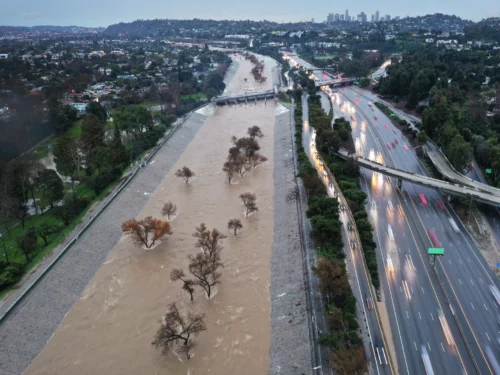Image courtesy of Mario Tama via Getty Images
New Haven winters seem less than riveting: grey, icy, and seemingly infinite loops of snow, sun, and shade. Yet, when you look up, there is a good chance you could be gazing at an atmospheric river.
Atmospheric rivers are long, narrow storms in the atmosphere. Typically associated with wet seasons on the western coast of North America, most research on atmospheric rivers has focused on their role in precipitation. However, a recent study by Yale graduate student Serena Scholz and Assistant Professor of Earth and Planetary Sciences Juan Lora considers another component: heat.
“They’re this double-edged sword,” Scholz said. “We need them for the water that they provide, but they can also be really devastating.” Published in Nature, this study explores how atmospheric rivers carry warm air from the subtropics to the poles, contributing to warmer temperatures. Initial analyses revealed large temperature anomalies beneath atmospheric rivers: ground temperatures beneath atmospheric rivers were found to be five degrees Celsius warmer than expected for the time of year, and ten to fifteen degrees warmer closer to the poles.
One notable implication is that atmospheric rivers don’t just raise temperatures—they also bring high humidity. The combination of hot and humid air, often measured by the “wet bulb temperature,” creates dangerous conditions that make it difficult for the human body to cool down through sweating, posing serious risks to affected communities. Scholz suggests that incorporating more data on atmospheric rivers in prediction models may improve the predictability of extreme heat events. Many stand to be affected: while atmospheric rivers are typically associated with the West Coast, their heat-related effects are often more pronounced in the East Coast and central US. Understanding these heat-carrying storms is crucial as they reshape weather patterns, accelerate climate change, and pose growing risks to communities worldwide.

